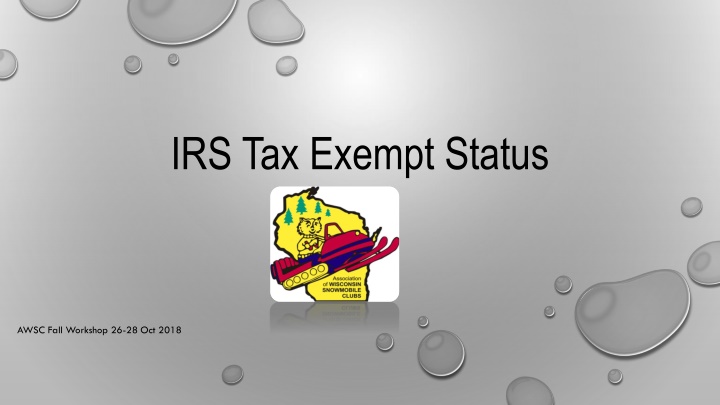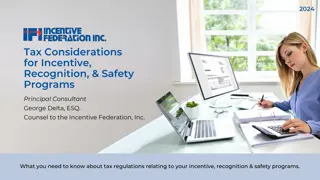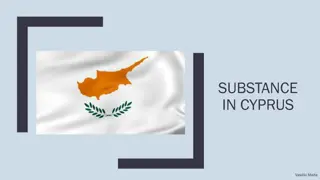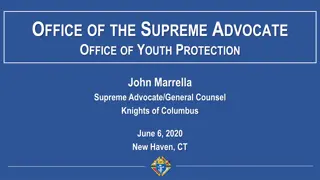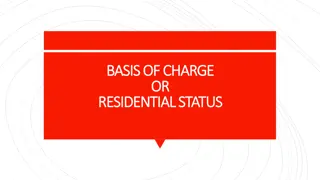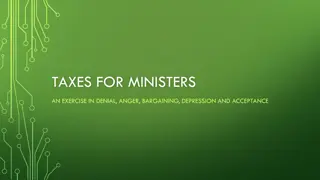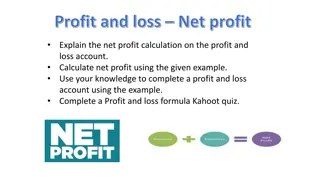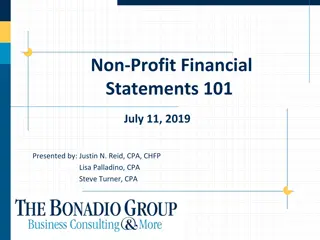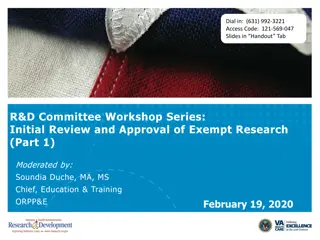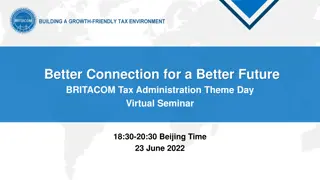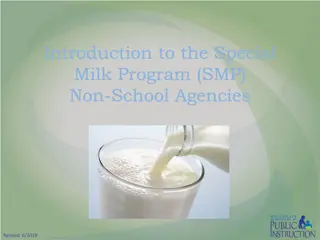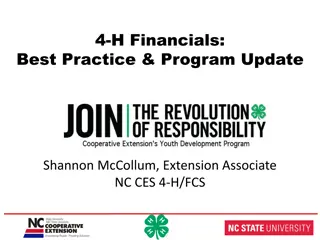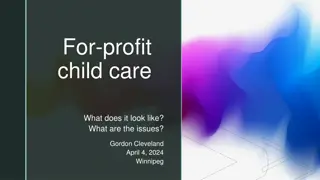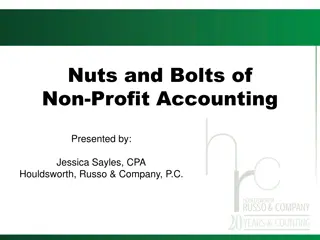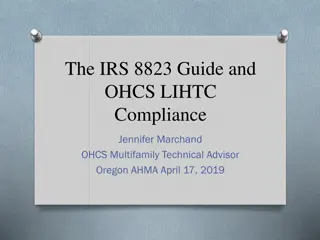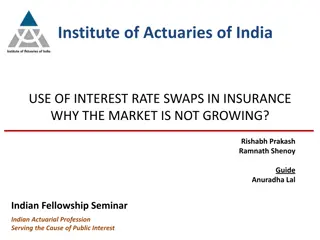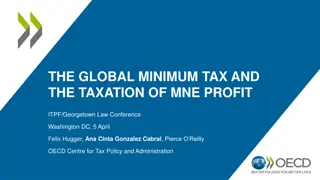Guide to IRS Tax Exempt Status Application for Non-Profit Organizations
This comprehensive guide provides essential information on applying for tax-exempt status with the IRS for non-profit organizations. It covers the benefits, application procedures, responsibilities, and tools needed for a successful application process. From determining eligibility to understanding different tax-exempt statuses such as 501(c)(3) and 501(c)(4), this guide offers valuable insights and tips for organizations seeking tax-exempt recognition.
Download Presentation

Please find below an Image/Link to download the presentation.
The content on the website is provided AS IS for your information and personal use only. It may not be sold, licensed, or shared on other websites without obtaining consent from the author.If you encounter any issues during the download, it is possible that the publisher has removed the file from their server.
You are allowed to download the files provided on this website for personal or commercial use, subject to the condition that they are used lawfully. All files are the property of their respective owners.
The content on the website is provided AS IS for your information and personal use only. It may not be sold, licensed, or shared on other websites without obtaining consent from the author.
E N D
Presentation Transcript
IRS Tax Exempt Status AWSC Fall Workshop 26-28 Oct 2018
OVERVIEW Before you apply Benefits of applying Which tax exempt status? Application procedures? What are the responsibilities? Tools, tips, and resources
Before applying for Tax Exempt Status Are you organized? Articles of incorporation filed? WDFI.org or use WI DFI Form 102 ($35) Non-stock, not for profit corporation under sec. 181.0202, Wis. Stat How do you operate? Bylaws adopted? Does the IRS know who you are? Must have an Employer Identification Number (IRS Form SS-4)
Before applying for Tax Exempt Status Take the Gross Receipts Test 1 year old and $7,500 2 years old and $12,000 3+ years or older and $15,000 STOP! Automatically Tax Exempt Provided you meet the 501(c)(3) requirements for Non-Profits
Which Tax Exempt Status 501(c)(4) SOCIAL WELFARE Organized/operated primarily to benefit the community E-form 8976: $50 via Pay.Gov, notifies IRS of intent to operate as a (c)(4) (w/in 60 days of establishment) 61 days and/or 3+ years since last 990 filing? Auto-Revoked basically treated as new. Form 8718: $600, User Fee for Exempt Org Determination Letter Request (1 page) Form 1024-A: Application for Tax Exempt Recognition (4 pages) **Charitable Donations made to you are generally not tax deductible Example: Snowmobile club that maintains trails 501(c)(7) SOCIAL & RECREATION CLUBS Organized/operated for pleasure, recreation, and other similar nonprofitable purposes Normally 65% of gross receipts must be membership fees and assessments Form 8718: $600, User Fee for Exempt Org Determination Letter Request Form 1024: Application for Recognition of Exemption Under Section 501(a) (7 pages 1-5, 11-12) **Charitable Donations made to you are not tax deductible Example: Snowmobile club that does not maintain trails, but may support other clubs that do
Which Tax Exempt Status? 501(c)(3) ORGANIZATIONS: Pub 4220; Organized and operated exclusively for one of the exempt purposes: Corporations, organized and operated exclusively for religious, charitable, scientific, testing for public safety, literary, or educational purposes, or to foster national or international amateur sports, or prevention of cruelty for children or animals. Bylaws Example: The organization is organized exclusively for charitable, religious, educational, and scientific purposes under section 501(c)(3) of the Internal Revenue Code, or corresponding section of any future federal tax code. Form 1023: If Gross receipts $50,000, Assets $250,000 (30 pages) or; Form 1023-EZ: Must complete 1023-EZ Eligibility Worksheet (3 pages) **Charitable Donations made to you are tax deductible
How Do You Apply for 501(c)(3) Status? * TWO FORMS: Read IRS Form 1023 Instructions -- Complete 1023-EZ Eligibility Worksheet (30 questions) IRS FORM 1023 IRS FORM 1023-EZ (ON-LINE) Part 1 Applicant Part 2 Organizational structure (Articles of Incorporation and Amendments) Part 3 Required provisions (Bylaws) Part 4 Narrative description of your activities Part 5 Compensation/financial arrangements w/ officers, dirs, employees, etc. Part 6 Members, individuals, or organizations that receive benefits from you Part 7 History Part 8 Your specific activities (political campaigns, fund raising, gaming, joint ventures, affiliations, contributions, loans, etc. Part 9 Financial data 5 years Part 10 Public charity status Part 11 Signature and User Fee ($600 attach check/money order) Schedules A. - H., If applicable 1023 checklist Part 1 Applicant Part 2 Organizational structure (Articles of Incorporation and Amendments) Part 3 Your specific activities (political campaigns, fund raising, gaming, joint ventures, affiliations, contributions, loans, etc. Part 4 Foundation classification (public charity) Part 5 Reinstatement after automatic revocation Part 6 Signature and User Fee ($275 via pay.Gov)
What Responsibilities Accompany 501(c)(3) Status? Recordkeeping All activities financial and non-financial (IRS pub 4221-PC compliance guide) Filing requirements Annual return form 990, 990EZ, 990N, 990PF and Sched A Most use 990N (electronic notice) if gross receipts $50,000 Automatically lose exempt status if fail to file for 3 consecutive years Disclosure requirements Public inspection of application & annual returns (3 years) Charitable contributions substantiation & disclosure (IRS pub 1771)
Tools, Tips, and Resources 1. Provide the required information on the principal officers and board of directors. 2. Ensure a director, trustee, principal officer or other authorized individual signs the form 1023 3. Submit a copy of adopted Bylaws or other document that sets out the organization's rules of operation. 4. Include all necessary financial data. It is based on how long your organization has existed. 5. Include the month the organization's annual accounting period ends. The date on the application should match the date stated in your by-laws, on financial statements, and any prior returns filed.
Tools, Tips, and Resources 6. Attach all required schedules. Some lines require supporting schedules. Check all line items on financial statements. 7. Complete all required pages. 8. Provide enough information about the organization's activities to show IRS how it will achieve the exempt purpose. Don't restate the purpose. 9. Attach a complete copy of the organizing document and all amendments. If a corporation, include a stamped copy from your WDFI filing 10. The number one delay in processing is . . .FAILURE TO INCLUDE THE CORRECT USER FEE!
Tools, Tips, and Resources Pub 526, Charitable Contributions, Pub 557, Tax-exempt Status For Your Organization, Pub 598, Tax On Unrelated Business Income Of Exempt Organizations Pub 1771, Charitable Contributions substantiation And Disclosure Requirements, Pub 3079, Tax-Exempt Organizations And Gaming, Pub 4221-PC, Compliance Guide For 501(c)(3) Public Charities Pub 4220, Applying For 501(c)(3) Tax-Exempt Status Pub 4779, Facts About Terminating Or Merging Your Exempt Organization Pub 5248, IRS Form 990-N Electronic Filing System (E-postcard) User Guide
Tools, Tips, and Resources Non-Profits may also apply for WI State Sales and Use Tax Exemption: Sales, purchases, fundraisers, etc. Review WI DOR Pub 206 / Submit WI DOR (Form S-103) Certification of Exemption Status or CES (Form S-211) On-Line Resources: Nonprofitally.com How to start a non-profit (5min) Bylaws tutorial (17 min) 1023 filing tutorial (18 min) Books: How to Form a Non-Profit Organization (13th Edition) $35 Website Downloadable Forms
SUMMARY Before you apply Benefits of applying Which tax exempt status? Application procedures? What are the responsibilities? Tools, tips, and resources
